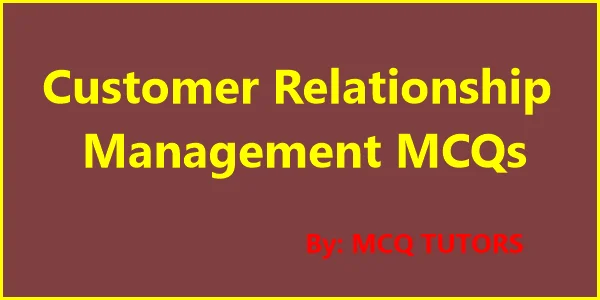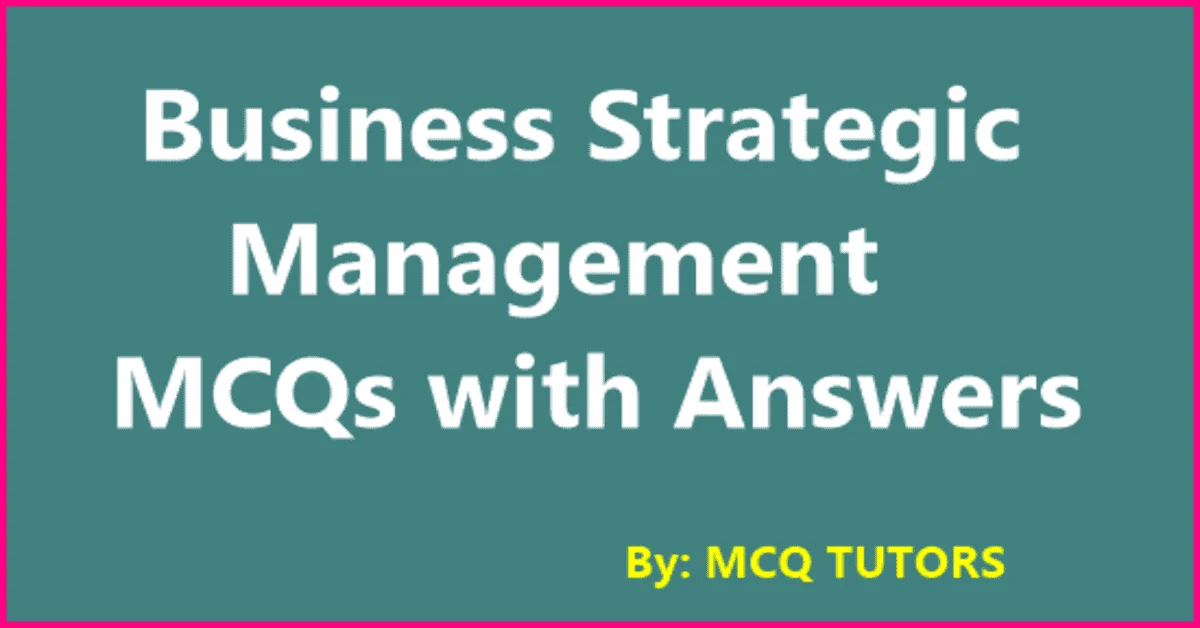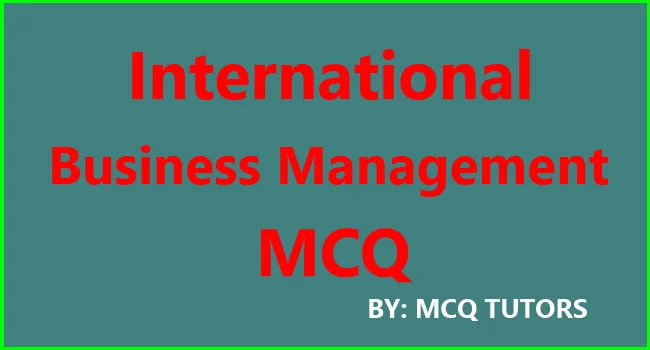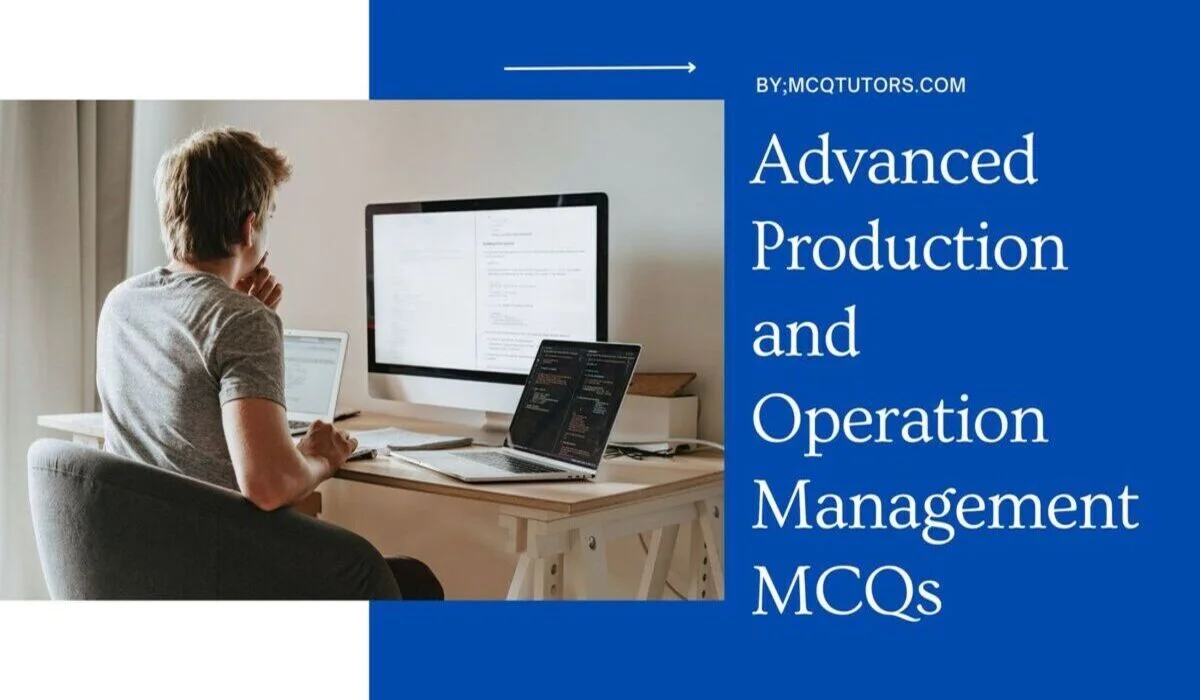Customer Relationship Management is about MCQ with answers Pdf. Customer Relationship Management MBA MCQ Questions and Answers.
All the questions are carefully designed to cover most CRM-related topics and their associated concepts. Each MCQ contains its corresponding answer, making it easier for users to verify their answers.
Customer Relationship Management MCQ with answers.
1. According to ___, CRM is an iterative process that turns customer information into positive customer relations.
a. Ronald S. Swift
b. Stanley A. Brown
c. Chris Todman
d. Gartner Group
Answer: (a) According to Ronald S. Swift, CRM is an iterative process that turns customer information into positive customer relations.
2. CRM is a business philosophy that aims at maximizing ___ in the long run
a. Organization value
b. Customer value
c. Business value
d. Software value
Answer: (b) CRM is a business philosophy that aims at maximizing customer value in the long run. By focusing on customer value, organizations can attract and retain customers, enhance their satisfaction, and build long-lasting relationships, ultimately leading to business success.
3. Enhance Customer Relationship Management started in ___.
a. 1980
b. 1970
c. 1990
d. 1985
Answer: (c) Enhance Customer Relationship Management (CRM) started in the 1990s. During this time, technological advancements and the recognition of the importance of customer-centric strategies led organizations to develop and adopt CRM systems and tools.
4. The objective of data mining is to detect ___ relationships among data
a. Vendor
b. Customer
c. Application
d. Hidden
Answer: (d) The objective of data mining is to detect hidden relationships among data. Data mining involves analyzing large datasets to uncover patterns, correlations, and insights that may take time to be apparent.
5. In ___ years, PeopleSoft got expanded from their original human resources platform
a. 1990s
b. 1980s
c. 1960s
d. 1970s
Answer: (a) PeopleSoft expanded from its original human resources platform in the 1990s. PeopleSoft is a software company initially focused on developing HR management systems but later expanded to other enterprise applications.
6. EAI stands for ___
a. External Authoring Interface
b. Enterprise Application Integration
c. Equal Appearing Interval
d. None of the above
Answer: (b) EAI stands for Enterprise Application Integration. It refers to integrating different enterprise applications and systems to enable seamless data and information flow, improving overall business efficiency and effectiveness.
7. ___ was developed as a Linux program. However, it is still compatible with Windows.
a. Telemation
b. SAP
c. Oracles
d. PeopleSoft
Answer: (a)
8. A successful CRM increases production and profit throughout the ___.
a. System life cycle
b. Business life cycle
c. Customer life cycle
d. Organization life cycle
Answer: (c) CRM strategies and practices aim to attract new customers, retain existing ones, and enhance customer satisfaction and loyalty, ultimately increasing the organization’s production and profit.
9. ___ combines the information of the customer that flows through different departments and customer channels
a. CRM Architecture
b. CRM life cycle
c. CRM programs
d. CRM coding
Answer: (a) CRM involves designing the structure and framework of the CRM system to ensure efficient data integration, information sharing, and coordination among various departments and touchpoints within the organization.
10. The ___ feature of CRM deals with communication between companies and their customers.
a. Collaborative
b. Operational
c. Analytical
d. Automation
Answer: (a) Collaborative facilitates and improves collaboration, interaction, and communication between the organization and its customers, enabling effective customer engagement and relationship building.
11. What is the other name of the CRM engine?
a. Data repository
b. Data mart
c. Data warehouse
d. All of the above
Answer: (d) The CRM engine is also called a data repository, data mart, and data warehouse. These terms are often used interchangeably to describe the storage and management of customer data within a CRM system. The CRM engine is a centralized repository for storing and retrieving customer-related information.
12. It is important to develop and evaluate the results of marketing interactions.
a. Campaign management tools
b. Interfaces
c. Analytical tools
d. Data warehouses
Answer: (a) Campaign management tools are essential to develop and evaluate the results of marketing interactions.
13. CRM system generates ___ throughout interactions on different channels.
a. 340-degree customer view
b. 350-degree customer view
c. 360-degree customer view
d. 370-degree customer view
Answer: (c) A 360-degree customer view refers to a holistic and comprehensive understanding of the customer, capturing data and insights from various touchpoints and interactions.
14. In ___, phase active management and assessment of products and services takes place.
a. Intelligence
b. Value creation
c. Integration
d. Initial
Answer: (c) In the integration phase of CRM, active management and assessment of products and services take place. This phase focuses on integrating various components of CRM, such as data, processes, and technologies, to ensure smooth and efficient customer relationship management.
15. SFA stands for ___.
a. Source Force Automation
b. Supply Force Automation
c. System Force Automation
d. Sales Force Automation
Answer: (d) SFA stands for Sales Force Automation. It refers to using technology and software tools to automate and streamline various sales-related tasks and activities. SFA systems help sales teams manage their leads, contacts, opportunities, sales processes, and customer interactions more efficiently, ultimately enhancing sales effectiveness and productivity.
16. SFA ensures ___ satisfaction and helps to increase the revenues by making better decisions
a. Developer
b. Customer
c. Employee
d. Manager
Answer: (b) By providing sales representatives access to customer information, sales history, and insights, SFA systems enable personalized and tailored customer interactions. It improves customer satisfaction, stronger relationships, and increased sales revenue.
17. Which of the following features of SFA helps to integrate the financial functionality of the back and front office of an organization?
a. Contract management
b. Opportunity management
c. Asset management
d. Data quality management
Answer: (a) The contract management enables organizations to manage and track customer contracts, including pricing, terms, and conditions. By integrating contract management with SFA, businesses can ensure consistency, accuracy, and efficiency in their financial processes, contributing to better financial control and customer satisfaction.
18. The entire sales pipeline is affected by ___ reporting
a. Inconsistent
b. Consistent
c. Overall
d. None of the above
Answer: (a) Inaccurate or inconsistent reporting can lead to misunderstandings, miscommunication, and inefficiencies in sales. It can result in missed opportunities, delays, and errors in sales forecasting, pipeline management, and decision-making.
19. Customer and account can be developed through a medium of ___ software in an organization.
a. Customer Force Automation
b. Account Force Automation
c. Sales Force Automation
d. Supply Sales Force Automation
Answer: (c) SFA systems provide tools and functionalities to manage customer interactions, track sales activities, and analyze customer data. By leveraging SFA software, organizations can enhance their sales processes, improve customer relationships, and achieve better sales outcomes.
20. ____ enables wireless or wired data synchronization between enterprise systems and mobile devices
a. Server-based iMobile suite
b. Client-based iMobile suite
c. Database-based iMobile suite
d. None of the above
Answer: (a) A server-based iMobile suite allows mobile users to access and interact with enterprise applications, databases, and data in real-time, regardless of location. The server-based approach ensures centralized management, security, and control over the data and applications accessed through mobile devices.
21. In ___, devices connect directly and synchronize with their owners’ data on a PC.
a. Software-based synchronization
b. Web-based portal synchronization
c. Enterprise space synchronization
d. Docking synchronization
Answer: (a) It typically involves physically connecting the device to a docking station or port on a computer to transfer and synchronize data. This method is commonly used for smartphones, tablets, and handheld devices.
22. Use of ___ help to supplement sales efforts and provide fast data amidst busy business schedules.
a. FAS tools
b. CRM tools
c. SFA tools
d. ASF tools
Answer: (c) SFA tools automate sales-related tasks and processes, such as lead management, contact management, opportunity tracking, and sales reporting. By automating these tasks, SFA tools enable sales professionals to focus on selling activities and make informed decisions based on real-time data.
23. ___ is part customer automation and part sales force automation
a. Data Force Automation
b. Field Force Automation
c. Customer Force Automation
d. Sales Force Automation
Answer: (b) Field Force Automation refers to using technology and tools to automate and streamline field-based activities and processes, such as field sales, field service, and field data collection.
24. ___ is the latest, new-generation direct marketing software that helps marketers to automate their marketing activities.
a. Enterprise Marketing Automation
b. Customer Support Management
c. Wholesale Marketing Automation
d. Supply Management
Answer: (a) Enterprise Marketing Automation encompasses various tools and functionalities for managing and executing marketing campaigns, including email marketing, lead nurturing, campaign tracking, and analytics.
25. EMA is designed to ___ the processes like designing, implementing and analyzing direct marketing campaigns which are sophisticated in nature.
a. Implement
b. Execute
c. Install
d. Automate
Answer: (d) Enterprise Marketing Automation (EMA) is designed to automate processes like designing, implementing, and analyzing direct marketing campaigns that are sophisticated. EMA systems provide tools and workflows for automating tasks such as campaign creation, lead scoring, email delivery, and campaign performance tracking.
26. Which among the following is defined as an ability to track and respond to clients in an individualized manner?
a. Personalization
b. Automation
c. Inbound management
d. Outbound management
Answer: (a) In the context of CRM, personalization involves tailoring interactions, offers, and communications to meet individual customers’ specific needs and preferences. Organizations can enhance customer satisfaction, build stronger relationships, and improve overall customer experience by personalizing customer interactions.
27. The ___ e-mail management is totally considered a service-oriented activity.
a. Client
b. Server
c. Inbound
d. Outbound
Answer: (c) Inbound email management involves handling and responding to incoming emails from customers, prospects, or other stakeholders. It focuses on providing prompt and efficient customer service, resolving inquiries, and addressing customer needs and concerns through email.
28. ___ helps the organizations to form and perform permission-based marketing campaigns.
a. Sales detail e-mail management
b. Inbound e-mail management
c. Customer-related e-mail management
d. Outbound e-mail management
Answer: (d) Outbound email management tools enable organizations to automate and track their email marketing activities, ensuring compliance with privacy regulations and improving the effectiveness of their marketing campaigns.
29. Which among the following is a major part of applications and techniques that help in gathering, storing, analyzing, and accessing the data?
a. Business analytics
b. Data visualization
c. Data mining
d. Virtual reality
Answer: (a) Business analytics uses statistical methods, data mining, and predictive modeling to extract insights and make data-driven decisions. Business analytics encompasses various tools and approaches to analyze and interpret data, enabling organizations to gain valuable insights and improve their business performance.
30. The process of analyzing and extracting the important information from a pile of collected data is defined as ___.
a. Process Management
b. Success data
c. Knowledge Discovery
d. None of the above
Answer: (c) Knowledge discovery aims to transform raw data into actionable knowledge that can be used to make informed decisions and drive business outcomes.
31. Visualization or data visualization is a ___ tool that helps in interpreting data using visuals or images.
a. Customer Analyst
b. Business Analytical
c. Program Analyst
d. Data Analyst
Answer: (b) Visualization or data visualization is a business analytical tool that helps in interpreting data using visuals or images. Data visualization enables users to identify patterns, trends, and relationships in data more efficiently and effectively.
32. The ___ protocol is the most commonly used enabling technology in tackling integration issues.
a. Session Initiation
b. Session Transmission
c. Network
d. Data Transfer
Answer: (a) SIP is a signaling protocol used in voice and video communications over IP networks. It facilitates the initiation, modification, and termination of real-time sessions between endpoints, such as IP phones, softphones, and video conferencing systems.
33. ___ is a technology that computerizes interactions with telephone callers
a. Software Response
b. Interactive Voice Response
c. Application Response
d. None of the above
Answer: (b) IVR systems use pre-recorded voice prompts and menus to interact with callers, allowing them to navigate through options and perform self-service actions, such as obtaining information, making selections, or transferring to a live agent.
34. ___ is a kind of speech production application. It translates standard language text into speech.
a. Voice Speech Recognition
b. Tongue
c. Text-to-Speech
d. None of the above
Answer: (c) Text-to-Speech (TTS) converts written text into spoken words, allowing users to listen to text-based content through the audio output. TTS technology is used in various applications, such as assistive technology for individuals with visual impairments, automated phone systems, voice assistants, and accessibility features in digital platforms.
35. ___ is the process of captivating verbal words as an input to a computer program
a. Data recognition
b. Moments recognition
c. Eye recognition
d. Voice recognition
Answer: (d) Voice recognition technology enables hands-free interaction with devices and systems, facilitating tasks such as voice commands, dictation, voice search, and voice-controlled interfaces.
36. ___ Coordinates the functions of the computer and telephony system
a. Computer Telephone Integration
b. Computer Network Integration
c. Telephony Network Integration
d. Network Protocol Integration
Answer: (a) Computer Telephone Integration (CTI) enables integration and interaction between computer systems, such as CRM or contact center software, and telephony systems, including PBX (Private Branch Exchange) or IP-based telephony infrastructure.
37. One of the basic features of CTI is ___
a. Protocol identification
b. Caller identification
c. Customer identification
d. Communication
Answer: (b) Caller identification involves identifying and displaying relevant information about the incoming caller, such as their name, phone number, customer history, or account details. This information helps agents or representatives handle calls more effectively and personalize their interactions with callers.
38. Call centers are computer centers managed by___
a. Dealers
b. Customers
c. Agents
d. Brokers
Answer: (c) Call centers are computer centers managed by agents. Agents are the individuals who handle incoming and outgoing calls, interact with customers, provide customer service, and resolve issues or inquiries. They are trained to use call center software, follow scripts or guidelines, and maintain quality and efficiency in customer interactions.
39. OLAP stands for ___
a. Online Asynchronous Processing
b. Overload Array Processing
c. Online Application Processing
d. Online Analytical Processing
Answer: (d) OLAP is a technology and approach for analyzing multidimensional data from various perspectives. It allows users to perform complex queries, aggregations, and calculations on large datasets to gain insights and perform advanced data analysis.
40. ___ provides an IVR system to take confidential inputs from the customers, only the required amount of information is exchanged.
a. CTI
b. CIT
c. PTI
d. PIT
Answer: (a) CTI enables secure and efficient handling of customer inputs through Interactive Voice Response (IVR) systems. IVR systems are designed to collect specific information from callers, such as account numbers, PINs, or other confidential details while ensuring data privacy and protection.
41. TSAPI stands for
a. Telephony Services Application Programming Interface
b. Transaction Services Application Programming Interface
c. Transmission Services Application Programming Interface
d. None of the above
Answer: (a) TSAPI stands for Telephony Services Application Programming Interface. TSAPI is a programming interface that enables software applications to access and control telephony features and functions in a computer telephony integration (CTI) environment.
42. CSTA stands for
a. Communication Supported Telecommunications Application
b. Customer Supported Telecommunications Application
c. Computer Supported Telecommunications Application
d. None of the above
Answer: (c) CSTA is a standard protocol and framework that enables computer systems to interact with telephony systems and services. It provides a common language and set of protocols for exchanging information and commands between computer applications and telephony infrastructure.
43. ___ is the API for media binding in CTI.
a. TAPI
b. TSAPI
c. JTAPI
d. MTAPI
Answer: (c) JTAPI (Java Telephony Application Programming Interface) is a set of Java APIs used to programmatically control telephony systems and applications.
44. In Web-enabled CTI, interaction with customers is through the ___.
a. Product reporter
b. Manager
c. Internet
d. None of the above
Answer: (c) Web-enabled CTI (Computer Telephony Integration) is a technology that enables businesses to integrate their telephone system with their website. This allows customers to interact with the business through the internet, rather than through traditional telephone systems.
45. ___ service offered through Web-enabled CTI saves money on printing and mailing.
a. E-Billing
b. E-Sales
c. E-Buying
d. E-Commerce
Answer: (a) E-billing is an electronic process for sending invoices and collecting payment from customers. It is a paperless, automated system that streamlines the billing process, making it more efficient and cost-effective for businesses.
46. The criteria to consider while defining ___ requirements are increasing internal productivity and reducing costs.
a. Technical staff
b. Managers
c. Testing
d. CRM
Answer: (d) When it comes to defining CRM requirements, it is crucial to focus on two primary aspects: increasing internal productivity and reducing costs. By prioritizing these factors, businesses can enhance their overall efficiency and profitability.
47. The output from the requirements stage of CRM implementation is ___.
a. Requirements specification document
b. Resource planning document
c. Customer satisfaction
d. Operations in successful CRM
Answer: (a) During the requirements stage of CRM implementation, the output is a Requirements specification document. This document plays a crucial role in defining what functionalities and capabilities the CRM system should possess. It outlines the specific needs and expectations of the organization and serves as a guide for the development team.
48. Automated intelligent call routing and monitoring in the CTI context is called ___
a. Interior Call Management
b. Intelligent Call Management
c. Interface Call Management
d. Internet Call Management
Answer: (b) Intelligent Call Management is a versatile telecommunications solution that has revolutionized the way businesses handle their phone calls.
49. Before the implementation of CRM, it is necessary to obtain the commitment of the ___
a. Employees
b. Management
c. Customers
d. None of the above
Answer: (b) Before implementing a CRM system, it is crucial to secure the commitment of top management. This ensures that the project aligns with the organization’s goals and receives necessary resources. The commitment can be obtained through strong communication and a clear outline of the benefits of CRM implementation.
50. ___ outlines the interactions between a user and an application.
a. Use case
b. Technical specification document
c. Functional specification document
d. Project user training plan
Answer: (a) A use case is a powerful tool that helps to outline the interactions between a user and an application. It essentially provides a detailed description of how a specific task or functionality can be used by the user within the application.
51. A company is considering several customer relationship management (CRM) providers and wants to understand what customizations each platform can offer. What is a good indicator of a CRM software’s customization capability?
a. The market share held by the CRM platform provider
b. The quality of the user experience & user interface
c. The robustness of the application programming interface (API)
d. The amount of user traffic the CRM platform can handle
Answer: (b) The quality of the user experience (UX) and user interface (UI) is crucial for any digital product or service. The UX refers to the overall experience users have while interacting with a website, application, or software. It encompasses factors such as ease of use, efficiency, and satisfaction. On the other hand, the UI focuses on the visual aspects and how users engage with an interface.
52. CRM ___ combines the information of the customer that flows through different departments and customer channels.
a. Architecture
b. Integration
c. Value creation
d. Intelligence
Answer: (a) CRM architecture is a system that integrates and centralizes customer information from various sources, such as sales, marketing, and customer service departments. It acts as a hub where data from different customer touchpoints, including emails, phone calls, social media interactions, and website visits, can be stored and accessed by relevant teams.
CRM MCQ Questions with Answers pdf
Consumer behaviour and advertising management MCQ with answers
Conclusion Points
Customer Relationship Management is an essential concept in today’s business world. It is important to understand the fundamentals of CRM and how to apply it successfully to get the most out of the technology.
Thanks for visiting our website; if you like the post on ” Customer Relationship Management is about MCQ with answers Pdf, ” please share it on social media.





Hello. And Bye.
If about starting dating a woman born in the sign of Pisces, should find out some of the features of character.